When you think of preparedness footwear, you probably imagine some sort of boots. Combat boots, hiking boots, maybe even cowboy boots. But there’s another sort of footwear that you might consider for your prepping supplies: Crocs. Specifically, the Crocs Classic Clog.
Yes, the ugly shoes with holes in them. Several of us on staff wear them in specific settings, and there are some good reasons for that:
- The Crocs are easy to clean, either with a garden hose or in the sink, which makes them perfect for gardening, livestock tending, and other dirty jobs.
- Since they’re easy to clean, they’re also easy to disinfect, which makes them a good choice when in a COVID-afflicted area.
- They have excellent traction, both inside and outside the shoe.
- They’re easy to slip on and off, or can be secured to your feet.
- Since they’re closed-toe and constructed with firm foam, they do a decent job of protecting your toes.
- Crocs are lightweight, and can be easily clipped to a go-bag and carried on-foot for emergencies.
I also have a kind of prepper reason for the Crocs. Most of my wardrobe is boots of different kinds that are pretty heavy, & I want something lightweight to keep in or near a bug-out bag, maybe attached to it with a carabiner. That way, I have footwear options.
— jonstokes.(eth|com) (@jonst0kes) July 10, 2020
An introduction to the Croc
If you’ve never heard of these infamous shoes, here’s the skinny: they were introduced in 2002 at the Fort Lauderdale boat show, where the company sold all 200 shoes they had available. They’ve since sold over 600 million pairs. The shoes were an instant hit, though fashion critics have made a habit of writing nearly deranged screeds about how ugly the shoes are. In recent years, Crocs have come in and out of fashion. They’ve had enduring popularity among with healthcare and kitchen workers.
Let’s get the obvious out the way: these aren’t the most stylish shoes in the world (although they’re apparently coming back into fashion). Crocs are chunky, they’re made of plastic, they’re full of holes.
But they weren’t made to be pretty, they were made for comfort and for wet, slippery environments, and for those purposes, they excel.
Analyzing the design
Yes, the Crocs are made of plastic, but not just any plastic. They’re made from a proprietary resin called Croslite, which has actually received rave reviews from podiatrists. (Some podiatrists say the heel design is lacking). The resin is lightweight — despite their bulky appearance, each shoe weighs less than seven ounces. Despite being lightweight, Crocs are notoriously durable.
The front toe is rigid and thick enough that if you stub your toe on a rock, you’re not going to be cursing and hopping on one foot. I regularly step on rocks in my garden without even noticing, because the sole of the shoe is so thick. Yet the material molds to the heat of your foot, so the shoe remains soft and pliable against the sole of your foot.
The Crocs Classic Clog was originally designed as a boating shoe, which is why it has so many drainage holes. The top and side of the shoe are designed to let water slip through. This makes them fantastic for walking through wet grass, mud, and other gross environments. It also makes wearing socks with Crocs completely counterproductive, unless you’re strictly wearing them indoors.
If you don’t want your feet to get wet, it’s possible to buy Crocs without the holes. But if you live in a hot environment, I’d buy the holes version. The top and side holes are great for ventilation. Without them, Crocs can get stuffy and hot. (One of our editors, Jon Stokes, lives in Texas and bought the Crocs with no holes. After just minutes of wearing them in over 100F summer heat, he knew he’d made a mistake.)
At the bottom of the shoe is a generous amount of tread, which keeps you from slipping and sliding on wet floors and on mud.
There are actually little nubs on the insole of Crocs to hold your feet in place. That way, you won’t slide around too much in them. Even if they’re a little big on your feet, you won’t be tripping over yourself. That said, I wouldn’t go running or hiking in them. I’ve taken a few ill-advised trips into the woods in my Crocs and nearly slid down a hill.
One of the most ingenious design decisions of the Crocs Classic Clog is the heel strap, which is large and easy to manipulate with your foot. Fold it forward and your feet just slip in, so if your hands are full and you just want to slip your shoes on, it’s easy enough to fold the heel strap forward and slip your feet in.
If you need the shoes to be better secured to your feet, just flip the heel strap back and put it around your heel.
Some have taken to calling Crocs with the heel strap forward “relaxed mode” and with the heel strap back “sports mode” or “4WD mode.”
Secret of the gardening world
Every serious gardener I know has a pair of Crocs. Still, I resisted for a long time. Every morning I have to go out to the field to feed my chickens and check up on the garden. I tried a number of different shoes for this:
- Sandals: Surprisingly hard to put on and leave your toes open and vulnerable.
- Boots: Time-consuming to put on, and they often get wet. If it’s muddy out, the tread gets gunked up and is hard to clean.
- Sneakers: Quick to put on, but get soaking wet and smelly while walking through mud or the morning dew.
Crocs, when I finally tried them, were a revelation. I can quickly slip them on in the morning. The semi-closed nature of the shoes keeps my feet drier than sandals, and the closed-cell foam doesn’t get soaked. If my Crocs do get wet, they dry quickly thanks to the foam and the drainage holes.
Once I get into the field, the grip inside and outside of the Crocs keeps me from slipping, even in mud. The wide base and light weight prevent my feet from sinking into the dirt. Being light on my feet keeps my garden soil from becoming overly compacted.
They also make a great camp shoe. I’ve carried moccasins and water shoes into the field. While they’re lightweight and easy to roll up into a pack, moccasins and water shoes have two key disadvantages:
- No traction whatsoever, which is potentially hazardous
- Very little protection from rocks, sticks, and other woodland dangers
True, Crocs are heavier than moccasins. They’re also bulkier. However, you can simply use a carabiner to clip them to the outside of your pack. You don’t want grody shoes in your bag anyway, right?
And whenever you get done with your chores and/or adventures, the Crocs are dead-simple to clean.
Cleaning the shoe
Outside of sandals and flip-flops, there aren’t many shoes you can spray with a hose or wash in the sink. Most shoes and boots have complex designs made of different materials: leather, foam, cloth, etc.
Meanwhile, the Croc Classic Clogs are composed of just four pieces:
- the shoe itself, which is one molded piece,
- the heel strap, and
- the plastic buttons that hold the heel strap in place.
In Crocs, there aren’t many places for germs and bacteria to hide. If I get my Crocs covered in mud or chicken poop, I spray them off with the hose and leave them outside to dry, and they’re usually ready to wear again in less than an hour.
This is part of the reason Crocs are so popular with nurses. “I wear smooth croc flats every day to work because I can wash them when I get home,” advanced practice nurse Stephanie Arnold told me. “I’m probably the only human who washes her shoes in the sink every day… Toddlers will put shoes in their mouth. My kids are not getting C. diff or COVID from my shoes.”
Because they’re easy to clean, they’re easy to disinfect. If you don’t want to bother washing them in the sink, some Lysol or a bleach solution will help keep germs off your shoes. That’s important when you step in chicken poop every day and have a toddler.
Rock out with your Crocs out
I don’t care if my Crocs will never win a fashion award (though it’s worth noting that Balenciaga did put them on the runway in 2018). Besides, I’m a dad and thus immune from all such criticisms. As far as I’m concerned, Crocs are a marvel of engineering. While I don’t recommend running, hiking, or blacksmithing in them, they are a useful lightweight shoe to keep around for dirty jobs.
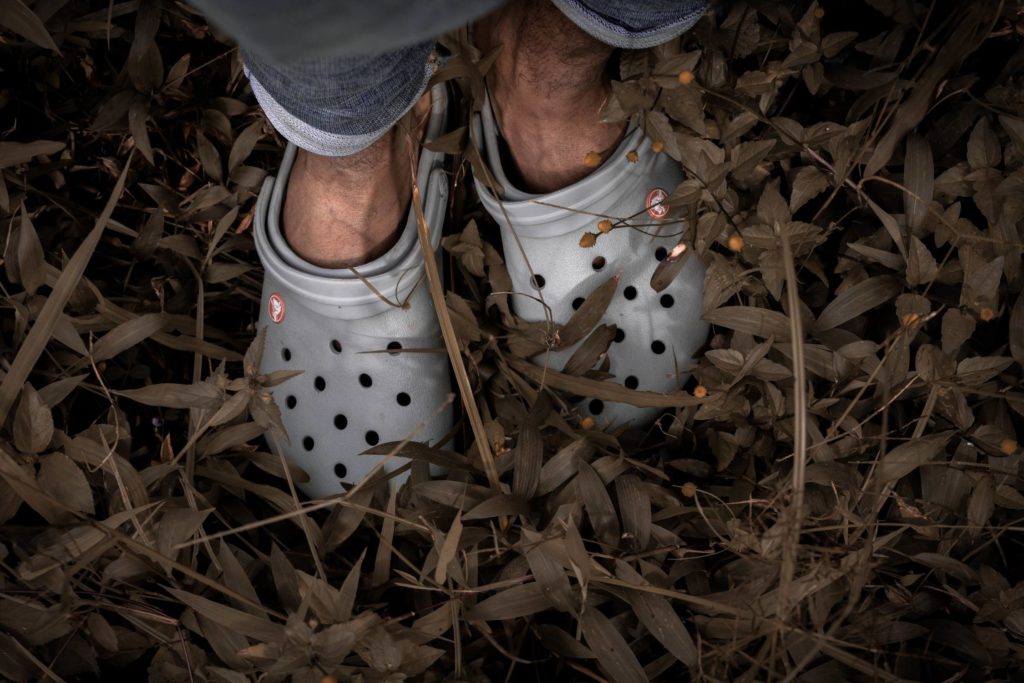
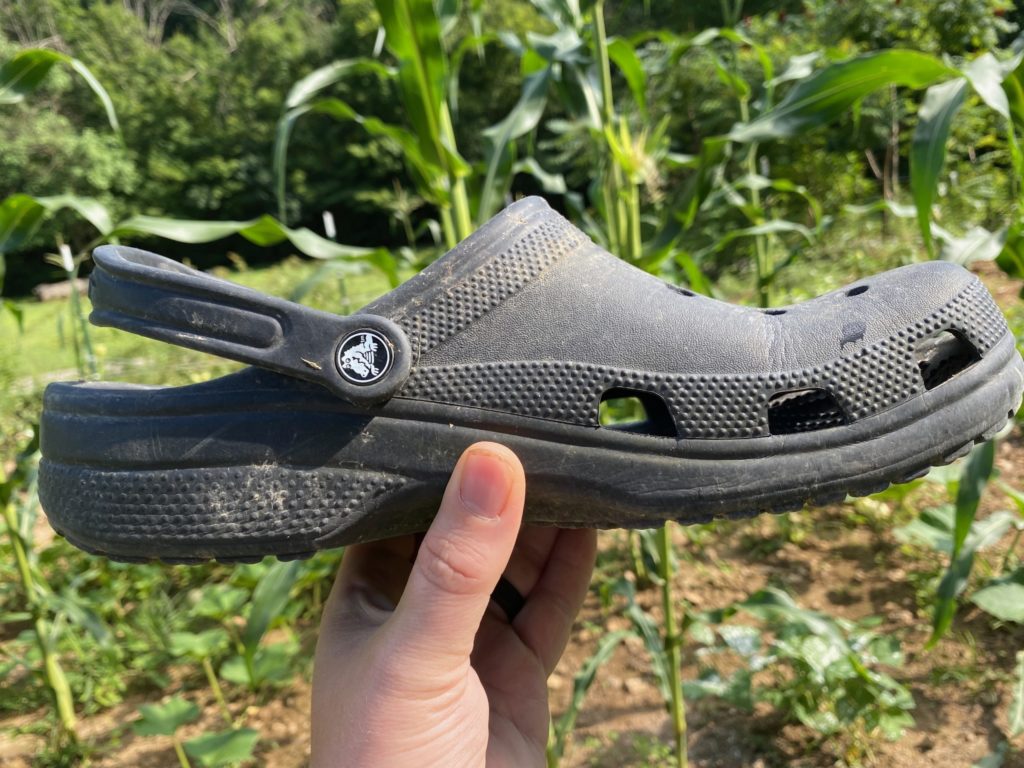
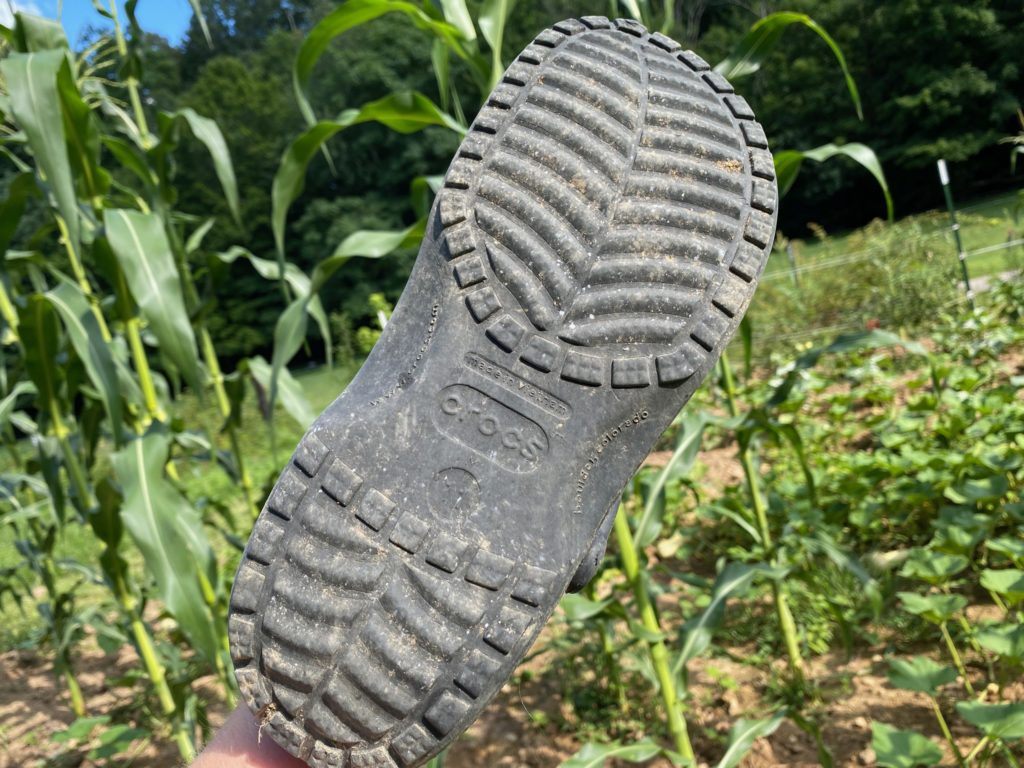
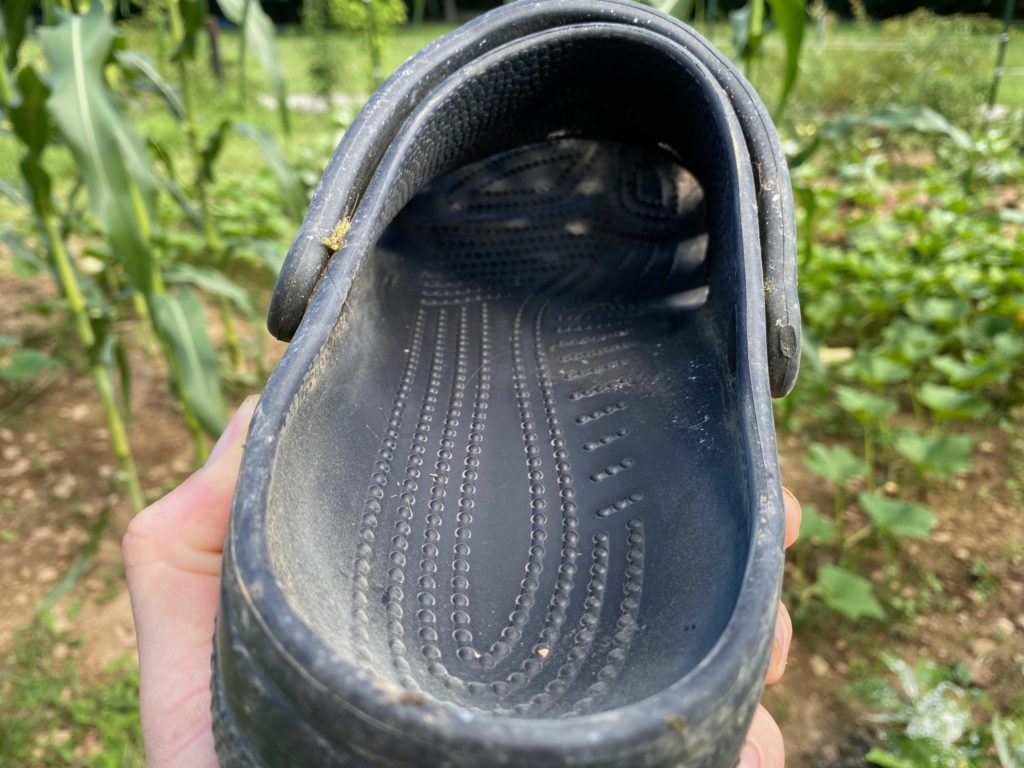
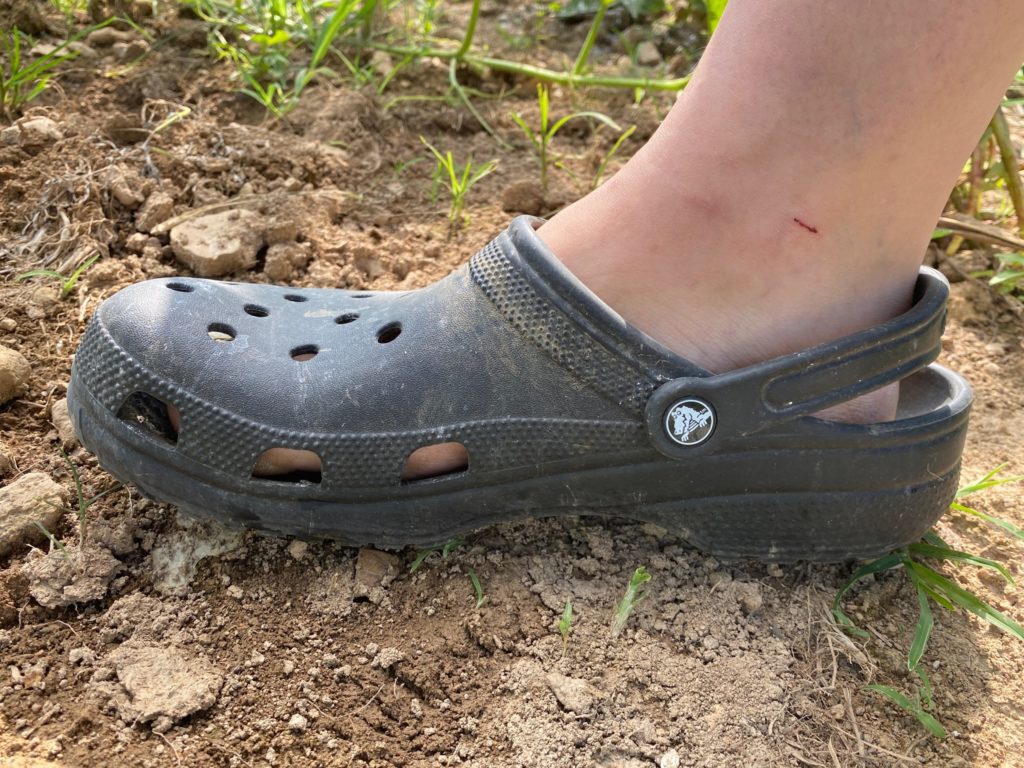
You are reporting the comment """ by on